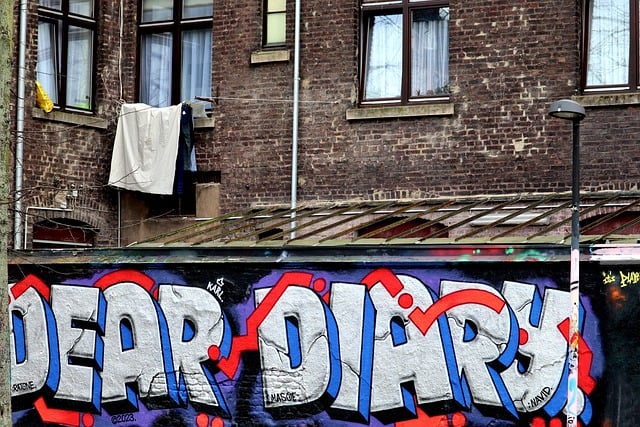# The Intersection of Art and Algorithms: How AI is Redefining the World of Visual Creativity
The advent of artificial intelligence (AI) has ushered in a new era for the art world, one that blurs the lines between human creativity and machine intelligence. As algorithms become increasingly sophisticated, they are not merely tools for artists but collaborators that challenge traditional notions of authorship and creativity. This article explores how AI is transforming visual art, the implications for artists and audiences, and the future of creativity in this digital age.
## The Rise of AI in Artistic Creation
A plethora of AI-driven tools have emerged, enabling artists to explore new dimensions of creativity. Programs like DeepArt, DALL-E, and Artbreeder utilize neural networks to generate artwork based on specific inputs. These platforms allow users to create unique pieces of art by blending styles, manipulating images, or generating entirely new visuals from scratch. The technology behind these tools leverages deep learning techniques that analyze vast datasets of existing art, learning patterns and styles that can be replicated or innovatively transformed.
Moreover, the ability of AI to analyze and synthesize artistic styles has led to the emergence of new genres. For instance, AI can combine elements of Impressionism with modern digital aesthetics, resulting in a hybrid form that challenges traditional categorizations. This fusion not only expands the visual vocabulary available to artists but also invites audiences to engage with art in novel ways. The democratization of art creation through AI means that anyone with access to these tools can experiment with artistic expression, regardless of their background or training.
## Rethinking Authorship and Creativity
The question of authorship in art has long been a topic of philosophical debate, but the rise of AI has intensified these discussions. Who is the true creator of a piece generated by an algorithm: the artist who inputs the parameters, the programmer who developed the algorithm, or the machine itself? This dilemma forces us to reconsider the very nature of creativity. Traditionally, art has been viewed as an inherently human endeavor, imbued with emotion, intention, and personal experience. However, AI-generated art introduces a layer of complexity, as it operates without the emotional context that typically informs human creativity.
Interestingly, some artists embrace AI as a partner in the creative process rather than a replacement. By collaborating with algorithms, they can explore uncharted territories of their imagination, pushing the boundaries of their work. This partnership can lead to unexpected results, provoking thought and dialogue about the role of technology in human expression. As artists experiment with AI, they often find that the results can be both surprising and inspiring, leading to new creative pathways that would not have been possible through traditional methods alone.
## The Impact on Art Consumption and Appreciation
Changes in the creation of art inevitably affect how it is consumed and appreciated. The rise of AI-generated art has prompted a re-evaluation of what constitutes value in the art world. Collectors and critics are beginning to consider AI-generated works alongside traditional pieces, leading to a broader definition of artistry. This shift raises questions about the criteria used to judge art: Is it the emotional resonance, the technical skill, or the innovative use of technology that determines value?
Furthermore, the accessibility of AI tools has transformed the relationship between artists and audiences. As more individuals gain the ability to create art through algorithms, the distinction between artist and viewer becomes increasingly blurred. Audiences are no longer passive consumers but active participants in the artistic process. This participatory culture fosters a sense of community and collaboration, as people share their creations online and engage in discussions about the implications of AI in art.
In addition, exhibitions featuring AI-generated art are gaining traction, showcasing the innovative potential of this technology. Galleries and museums are beginning to curate shows that highlight the intersection of art and technology, inviting viewers to consider the implications of AI on creativity and culture. These exhibitions often spark conversations about the future of art, challenging audiences to reflect on their perceptions of creativity and the role of technology in shaping artistic expression.
## The Future of AI and Visual Creativity
Looking ahead, the potential for AI in the realm of visual creativity is vast. As technology continues to evolve, we can expect even more sophisticated algorithms that can mimic not only styles but also the emotional nuances of human expression. This development could lead to an era where AI-generated art becomes indistinguishable from that created by human hands, further complicating the discourse around authorship and authenticity.
Additionally, the integration of AI into art education may redefine how future generations of artists are trained. By incorporating AI tools into curricula, educational institutions can equip students with the skills necessary to navigate this new landscape. This approach promotes a hybrid model of art-making, where traditional techniques coexist with digital innovations, fostering a more comprehensive understanding of creativity.
In conclusion, the intersection of art and algorithms is a dynamic and evolving field that challenges our perceptions of creativity, authorship, and value. As AI continues to transform the landscape of visual art, it invites us to explore new forms of expression and engage with art in ways we never thought possible. By embracing the potential of AI, artists and audiences alike can embark on a journey of discovery that redefines the very essence of creativity in the 21st century.

